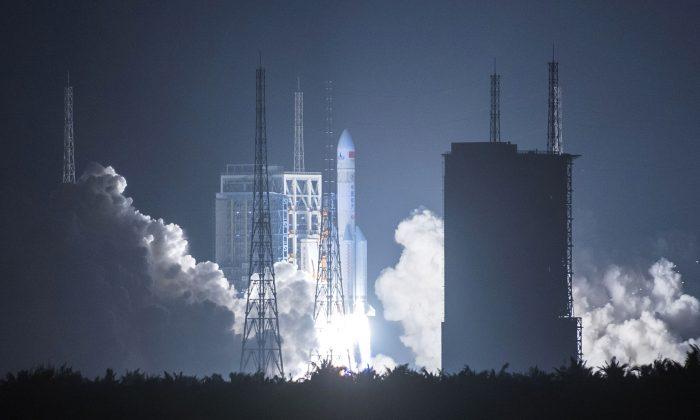The first strategy report following President Donald Trump’s launch of the U.S. Space Command warns that China is seeking to displace the United States as the leading space power.
U.S. Space Command was re-established as the Defense Department’s 11th Unified Combatant Command on Aug. 29 in response to U.S. adversaries developing more advanced anti-satellite weapons.
“Our adversaries are weaponizing Earth’s orbits with new technology targeting American satellites that are critical to both battlefield operations and our way of life at home. Our freedom to operate in space is also essential to detecting and destroying any missile launched against the United States,” Trump said during the Rose Garden ceremony on Aug. 29.
Despite China in 2007 disruptively launching an anti-satellite weapon to destroy one of its satellites, a decade passed before America would reimagine space as a battlefield.
The workshop forecasted that by 2060 there could be thousands of civil, commercial, and military individuals from many nations that live and work in Low Earth Orbit (an altitude of 99 to 1,200 miles above the Earth’s surface), across the moon and on Mars. Activities could include crewed bases supporting logistics, science or economy, space manufacturing, tourism, and resource extraction.
While most Americans may assume that the United States is dominant in space, the report names China, India, the EU, Russia, Japan, and Brazil as “first-tier commercial space powers.”
The report also labelled China as a “peer rival” to the United States in space, and noted that the challenges posed by China in the future were also considered in the classified strategic document “Air Force Strategic Environmental Assessment 2016-2036” issued during the Obama administration.
The workshop posited three increasingly negative scenarios regarding the expansiveness of China’s space ambitions, in which the United States and its allies are seen as a “rival at best and a potential adversary at worst.”
According to the report, it is an American vital interest to prevent a foreign power from exercising future leadership over the space domain and leveraging their control to attract a disproportionate share of global space revenue streams.
- The United States must recognize that space in 2060 will be a major engine of national political, economic, and military power for the nations organized to exploit the potential;
- The United States now faces growing competition from allies, rivals, and adversaries for leadership in the exploration and exploitation of space;
- China is implementing a long-term civil, commercial, and military strategy to economically develop the region of space between the Earth and the moon with the explicit aim of displacing the United States as the leading space power
- The U.S. coalition must promote and optimize the combined civil, military, and commercial exploitation of space to best serve the nation’s interests.





